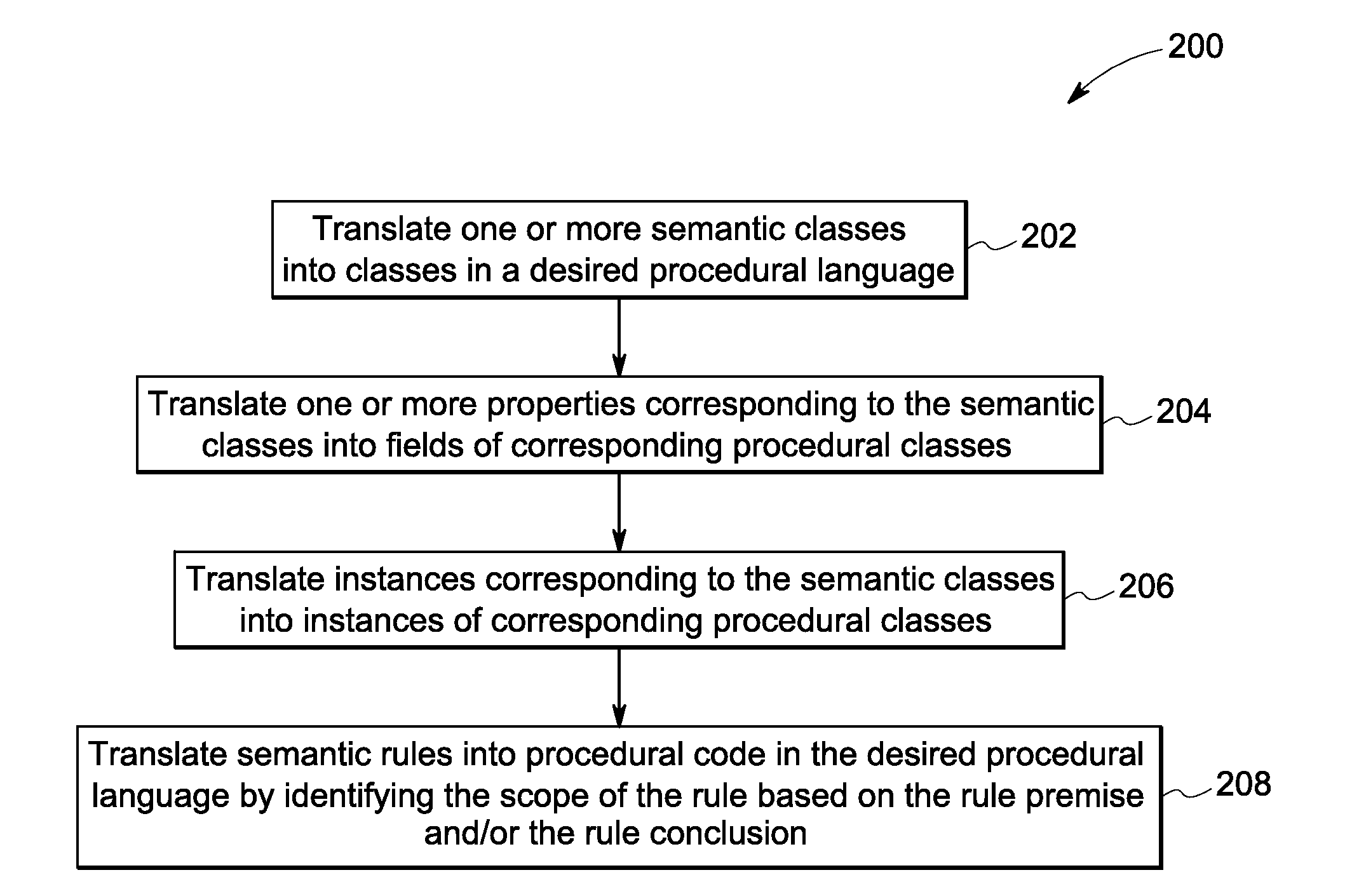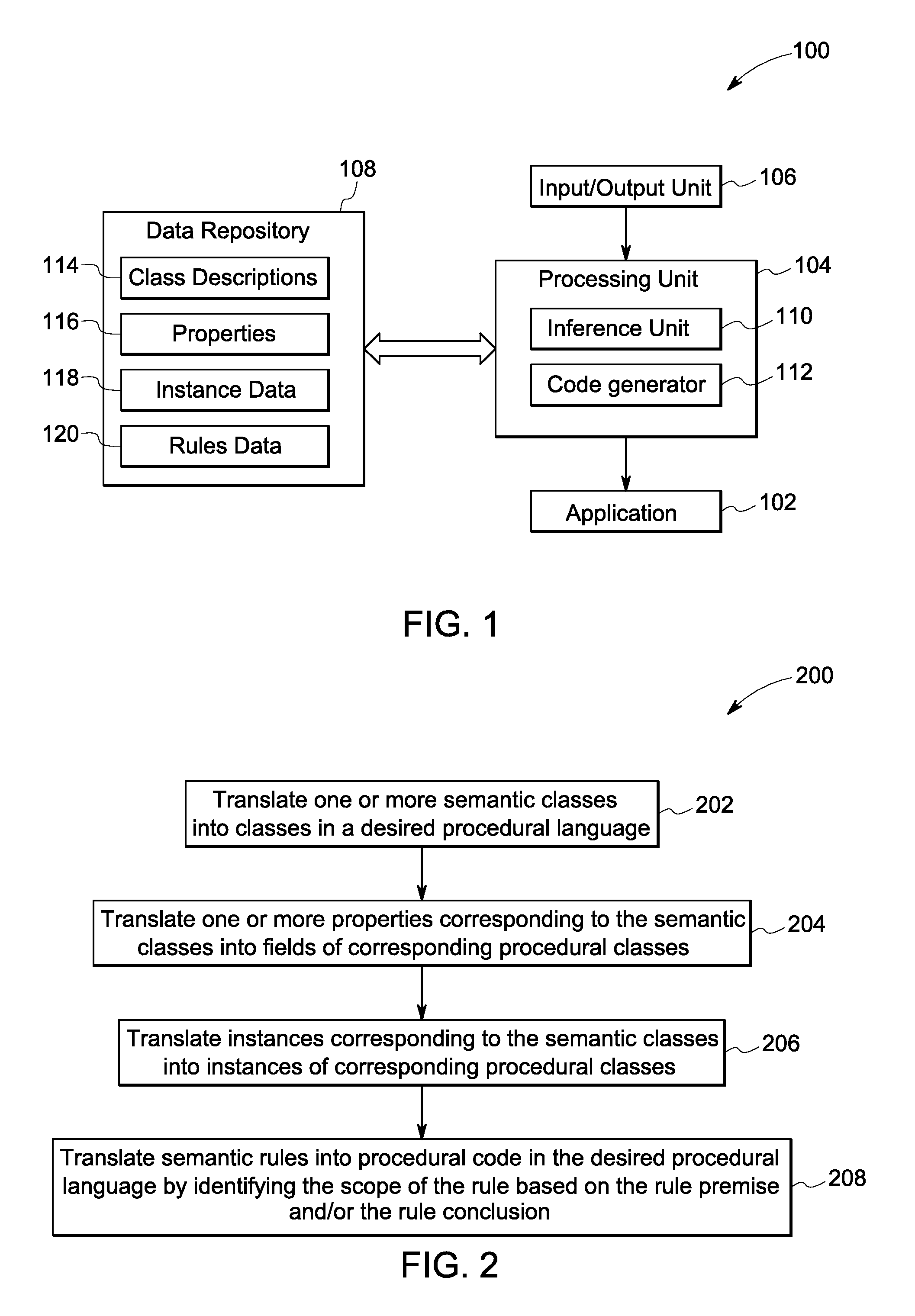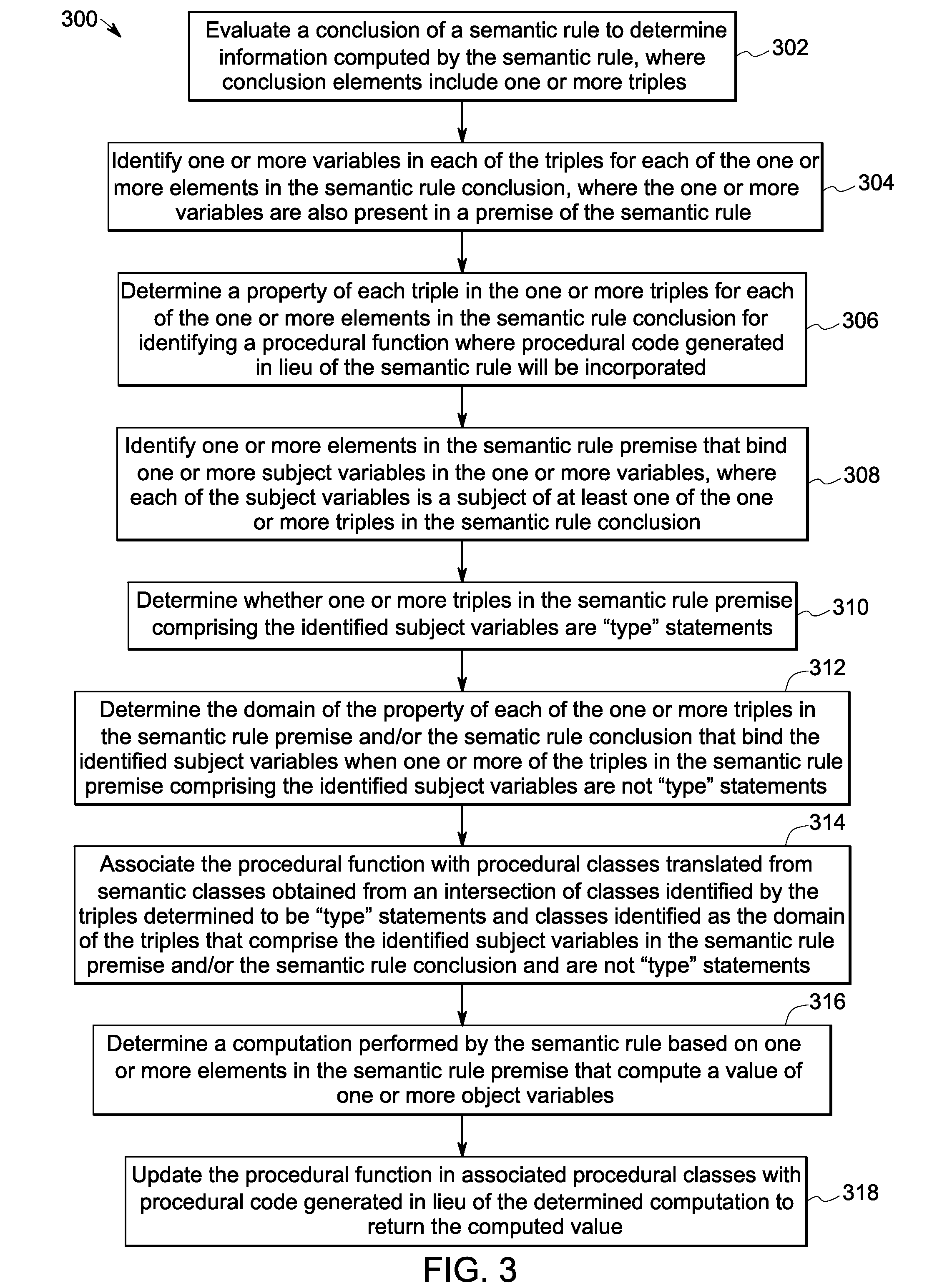Methods for code generation from semantic models and rules
a semantic model and code generation technology, applied in the field of methods for code generation from semantic models and rules, can solve the problems of inability to translate complex and independently implemented semantic rules into procedural code, and insufficient capture of conceptual information by the generated cod
- Summary
- Abstract
- Description
- Claims
- Application Information
AI Technical Summary
Problems solved by technology
Method used
Image
Examples
Embodiment Construction
[0013]The following description presents systems and methods for generating code from semantic models and rules. Particularly, certain embodiments illustrated herein describe techniques for translating semantic rules into executable code in an object-oriented programming language by identifying the scope of the rule based on the rule premise and / or conclusion. To that end, the object-oriented programming language includes, for example, Java, C++, Smalltalk and Python. An exemplary environment suitable for practicing various implementations of the present translation techniques is described in the following sections with reference to FIG. 1.
[0014]FIG. 1 illustrates an exemplary code generation system 100 for translating one or more semantic models and rules into an executable application 102 in an object-oriented procedural programming language such as Java. In one embodiment, the system 100 is a general-purpose computing system that may include, for example, general-purpose processo...
PUM
 Login to View More
Login to View More Abstract
Description
Claims
Application Information
 Login to View More
Login to View More - R&D
- Intellectual Property
- Life Sciences
- Materials
- Tech Scout
- Unparalleled Data Quality
- Higher Quality Content
- 60% Fewer Hallucinations
Browse by: Latest US Patents, China's latest patents, Technical Efficacy Thesaurus, Application Domain, Technology Topic, Popular Technical Reports.
© 2025 PatSnap. All rights reserved.Legal|Privacy policy|Modern Slavery Act Transparency Statement|Sitemap|About US| Contact US: help@patsnap.com



